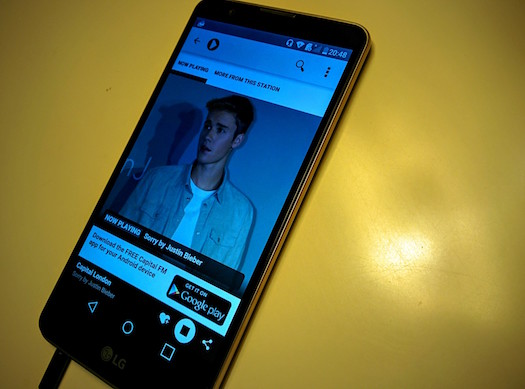Radio Tomorrow with James Cridland
It’s been a busy few days at Radiodays Europe. This year, the radio conference was in Paris in France, and much has been reported already about what’s been said. More and more, this conference feels like a global meeting place for radio, not just a European meeting place – with accents from Australia, America and others mingling in with Europeans. They say there were 1,500 delegates this time around: next year, it’ll be in Amsterdam.
For me, the “big thing” was the launch of a new mobile phone, the LG Stylus 2. It’s a mid-range, mostly unassuming Android phone with a little stylus to write handwritten notes; but it contains one thing of note: a rather fine FM and DAB+ tuner.
Actually, as ever, it’s a little bit more complicated than that. The FM and DAB+ chip inside is, indeed, fine: even if the default tuner app is a bit poor. The DAB+ bit seems, unusually, very sensitive; but the DAB+ tuner app is just a bare-bones tuner that scans and tunes into stations.
The real game-changer in this new phone is that the FM and DAB+ chip is also accessible from your own app: through an open standard that theoretically allows any app full access to the radio tuner. This opens up quite a few opportunities.
The app from Commercial Radio Australia, for example, gives you a colourful tuning dial showing logos of the available radio stations; as well as an interactive slideshow feature: see images of stuff you’re listening to on the radio, and click through to be taken to the website to learn more.
The app from Radioplayer, the UK consortium, allowed stations to link their internet stream with their DAB stream. Drive away from a DAB transmitter, and your phone will automatically switch to the internet when the DAB signal gets too poor. Drive back into the coverage area, and you’ll switch back to DAB. This could work for FM, too.
An app from a broadcaster could automatically give a listener the broadcast feed (via FM or DAB+), saving them bandwidth and battery life.
I’ve long believed that the future of radio is, in many ways, linked to the user experience of radio. Remembering a random number to tune into a radio station seems archaic in this age; as does changing frequency as you travel. With a clever radio receiver, radio can be so much better.
Getting a software-addressable FM/DAB chip inside a mobile phone might seem a small step: but I think it’s a giant one for radio. Many congratulations to IDAG and WorldDAB for such a seemingly simple move – and one that hopefully will enable significant innovation for radio. At last, we have a broadcast radio receiver that’s connected to the internet. Let’s see what innovation happens.
Here’s a video of it working

